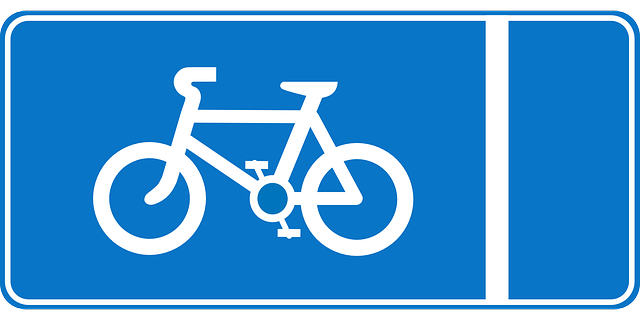
The publication The State of European Cities 2016 covers the 28 EU member states and the countries of the European Free Trade Association (EFTA), i.e. Iceland, Liechtenstein, Norway and Switzerland and focuses on demographic, economic, mobility, societal and environmental trends and trends in urbanisation.
In cities, more people have a housing cost burden of more than 40% of their disposable income. In the EU, 13% of city dwellers face a high housing cost burden compared to 10% in rural areas. But national differences show a wider spread and are in excess of 5 percentage points in Austria, Belgium, the Czech Republic, Denmark and Germany.
The speed and frequency of trains is much lower in central and eastern EU countries. Although some countries, such as the Czech Republic and Hungary, may have a dense rail network, the frequency and speed of the service on many of these lines makes it difficult to offer an attractive alternative to travel by car.
Seven countries out of the countries that accessed the EU after 2004 (Cyprus, the Czech Republic, Estonia, Lithuania, Malta, Poland and Slovenia) now have higher motorisation rates than Denmark which is the EU-15 country with the lowest motorisation rate.
In the largest cities, car ownership rates can be as much as 40% lower than the national average. This is the case in Amsterdam, Berlin, London and Paris. However, there are some notable exceptions such as Bratislava, Budapest, Prague, Rome and Warsaw, where higher incomes lead to a higher car ownership rate than the country as whole. In smaller cities, car ownership tends to be higher than in larger ones and sometimes reaches or exceeds the national rate.
Prague, capital of the Czech Republic, has greatly expanded and improved its public transport services over the past two decades, yielding rising passenger volumes and stabilising the public transport mode share of trips.
Data on almost 400 European cities show that in a few dozen cities, more than 20% of the population are without green spaces in their neighbourhood, including several cities in Bulgaria and Romania. In a quarter of the cities, less than 2% of the population do not have green areas within walking distance. Some of the larger cities in this group are Essen, Prague, Torino and Stockholm. There are more than 50 hectares of green areas in Prague and Stockholm (very high 54 hectares in Prague; it is 18% of the total land area of the capital city).
High concentrations of ozone occur mostly in southern areas of the EU, notably in Northern Italy and Greece, but the threshold was also exceeded for more than 25 days annually in the Czech Republic, Hungary and Slovakia.
Although some countries with already quite large municipalities merged more, for example the UK, others such as the Czech Republic further reduced the size of their already small municipalities. As a result, the average population per municipality in 2014 varied between 150,000 in the UK and Ireland to only 1,700 in the Czech Republic - almost 100 times smaller. The largest reduction in the number of municipalities occurred in Greece (-94%), Latvia (-80%), Ireland (-73%), Iceland (-65%) and Denmark (-64%). Switzerland reduced its municipalities by 15% but nevertheless still has small municipalities with on average only 3,500 inhabitants.
Between early 1990s and 2014, the number of municipalities rose the most in the Czech Republic (+50%), as well as Croatia (+226%) and Slovenia (+260%), but this followed after the independence of Croatia and Slovenia in 1991.
Among similar capital cities, Bucharest, Budapest, Brussels and Vienna all have a population density above 15,000 within the first 5 km from the centre. Amsterdam, Lisbon, Prague and Stockholm are less dense in their centre, reaching over 10,000. Beyond 10 km, the density drops below 5,000, with the exception of Lisbon, which is more constrained by its location on the coast.
The report includes Case study: Transport policies in Prague, Czech Republic
From 1990 to 2000, car ownership in Prague almost doubled from 276 to 525 per 1,000 inhabitants while vehicle km of car use rose from 7.7 million to 16.6 million on an average weekday. Simultaneously, public transport use fell from 1,319 to 1,033 million passenger trips per year, leading to serious road congestion, illegal parking of cars, rising traffic injuries, and worsening noise and air pollution.
Consequently, the City of Prague undertook a range of policy measures such as parking management with preference for neighbourhood residents, while increasing parking prices and limiting parking time. In addition, Prague expanded its pedestrian zone in the city centre and restricted many streets to local traffic. Improvements in public transport focused on expanding and modernising the metro, tram and bus systems, and integrating fares, ticketing, routes and coordination among 17 different public transport operators throughout Greater Prague.
From 1990 to 2014,Prague’s metro grew from 39 to 59 kilometres (km) and the tram network from 130 to 143 km. The bus service network was expanded with suburban routes growing from 607 to 2,258 route km. For all types of public transport combined, both in Prague and its suburbs, the network services rose from 153 million in 2010 to 208 million km in 2014.
The outcome has been a public transport ridership growth from 1,033 million trips in 2000 to 1,297 million in 2014. Prague has also succeeded in improving traffic safety, reducing traffic fatalities from 94 in 1990 to 20 in 2014 while serious traffic injuries fell from 369 to 206.
In cooperation with the EU, Prague has undertaken two major projects to reduce congestion and improve safety. As part of the EU’s Cohesion Policy, Prague received EUR 20 million in funding to improve its road traffic management system, mainly through the establishment of a centralised traffic control centre which provides information on congestion and accidents both to traffic controllers and drivers. The same programme provided Prague with EUR 18 million to improve road safety through advanced information technology.